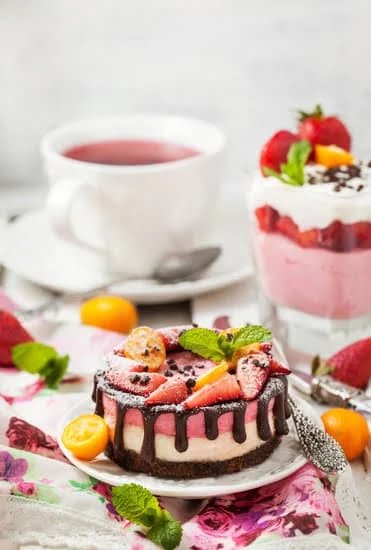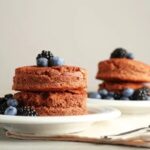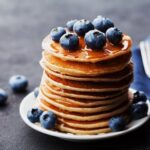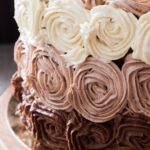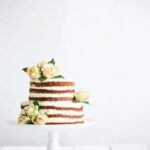Are you looking to add a personal touch to your cakes? In this article, we will explore how to make cake decorations and transform your baked creations into works of art. Cake decorations play a crucial role in enhancing the visual appeal of a cake, making it stand out on any occasion. From fondant to royal icing, there are various types of cake decorations to choose from, each offering a unique way to elevate your confectionery creations.
When it comes to making cake decorations, having the right tools and ingredients is essential. In the next section, we will discuss the basic tools and ingredients needed for creating stunning cake decorations, as well as tips on where to purchase them. With this knowledge, you can begin your journey towards mastering the art of decorating cakes.
From fondant and buttercream to royal icing and edible flowers, there is no shortage of options when it comes to cake decorations. In the following sections, we will delve into the different types of cake decorations available and provide detailed instructions on how to create them. Whether you’re a beginner or an experienced baker looking for new techniques, this article will guide you through the step-by-step process of making beautiful and delicious cake decorations.
Basic Tools and Ingredients for Cake Decorations
Making beautiful cake decorations is a fun and rewarding task that can elevate the appearance of your baked goods. Whether you are a novice or experienced baker, having the right tools and ingredients is essential for creating stunning decorations. Here is a list of basic tools and ingredients you will need to make cake decorations:
- Rolling pin: A rolling pin is necessary for rolling out fondant or gum paste to the desired thickness for creating decorations.
- Piping bags and tips: Invest in a variety of piping tips and disposable or reusable piping bags for creating detailed buttercream or royal icing decorations.
- Fondant smoother: This tool helps to smooth out fondant on cakes or create clean edges for fondant decorations.
- Palette knife: A palette knife is useful for spreading buttercream or ganache on cakes and also for lifting delicate fondant decorations.
- Fondant or gum paste: These pliable sugar-based pastes are perfect for creating intricate cake decorations, such as flowers, ribbons, and figurines.
- Buttercream frosting: Buttercream is commonly used for piping borders, flowers, and other decorative elements on cakes.
- Royal icing: This stiff icing made from egg whites and powdered sugar is ideal for creating elaborate designs like lace patterns and intricate details on cakes.
Where to Purchase Items:
You can find basic tools such as rolling pins, parchment paper, and pastry brushes at your local kitchen supply store. For specialty items like edible food coloring gels, fondant smoothers, or petal dusts, check with baking specialty stores or online retailers like Amazon or Etsy.
With these essential tools and ingredients in hand, you are well-equipped to start making beautiful cake decorations that will impress your friends and family. Remember to have fun experimenting with different techniques and designs.
Types of Cake Decorations
Cake decorations come in various types, each offering unique qualities and characteristics that cater to different tastes and preferences. Fondant, buttercream, royal icing, and edible flowers are some of the most common types of cake decorations used by bakers and pastry chefs. Each type has its pros and cons, making it essential for bakers to understand their differences before deciding on the best option for their specific cake decoration needs.
Fondant is a popular choice for creating smooth and flawless finishes on cakes. Made from sugar, water, gelatin, and glycerin, fondant is versatile and can be rolled out into thin sheets for covering cakes or shaped into intricate designs. On the other hand, buttercream offers a creamy texture that is perfect for piping onto cakes to create beautiful swirls, rosettes, and other detailed designs.
It is made from butter or shortening mixed with confectioners’ sugar and flavorings. Royal icing is another type of decoration that dries hard, making it suitable for creating intricate lace patterns, delicate flowers, and piped details on cakes. Meanwhile, edible flowers add a natural and elegant touch to cake decorations as they are made from real flowers that are safe for consumption.
Understanding the characteristics of each type of cake decoration will guide bakers in choosing the best option for their specific design needs. Whether aiming for a smooth finish with fondant or intricate detailing with royal icing, knowing how to make cake decorations using these different types will enhance the beauty and overall appeal of any cake creation.
By mastering the techniques required for each type of decoration, bakers can bring their creative vision to life while delighting others with visually stunning and delectable treats at any celebration or event.
Step-by-Step Guide on Making Fondant Cake Decorations
Fondant cake decorations are a popular choice for adding elegance and flair to cakes for various occasions. Whether you’re planning to create a stunning wedding cake or a festive birthday cake, fondant decorations can take your baking skills to the next level. In this section, we will provide you with a step-by-step guide on how to make and work with fondant, as well as share some tips and tricks for creating beautiful fondant decorations.
Making Fondant
To begin making fondant cake decorations, you’ll need to prepare the fondant itself. You can either make your own fondant from scratch using ingredients like confectioners’ sugar, gelatin, corn syrup, and glycerin, or you can opt for store-bought ready-to-use fondant. Whichever option you choose, it’s essential to knead the fondant until it becomes smooth and pliable before you start shaping it into decorations.
Working With Fondant
Once you have your fondant ready, it’s time to start creating your desired decorations. Roll out the fondant using a rolling pin on a clean and smooth surface dusted with powdered sugar or cornstarch to prevent sticking. Use cookie cutters, sculpting tools, or molds to cut or shape the fondant into various designs such as flowers, leaves, bows, or shapes. You can also color the fondant using food coloring gels or powders to achieve different shades for your decorations.
Tips and Tricks
When making fondant cake decorations, it’s important to keep a few tips in mind. Avoid using too much powdered sugar when rolling out the fondant as it can dry out the mixture. If the fondant becomes too sticky, lightly dust your hands with powdered sugar while working with it.
Additionally, store any unused fondant in an airtight container to prevent it from drying out. Experiment with different textures and techniques such as embossing or painting on the fondant to add depth and detail to your decorations.
By following this step-by-step guide on making fondant cake decorations and implementing these tips and tricks along the way, you’ll be able to create eye-catching and professional-looking edible adornments for your baked creations.
Step-by-Step Guide on Making Buttercream Cake Decorations
When it comes to cake decorating, buttercream is a popular choice for its creamy texture and versatility. Whether you want to create smooth, elegant designs or intricate details, buttercream offers a wide range of possibilities. In this section, we will provide you with a step-by-step guide on how to make and pipe buttercream decorations for your cakes.
Making Buttercream
To start making buttercream cake decorations, you will need to prepare the buttercream itself. The basic recipe involves creaming together softened butter and powdered sugar until light and fluffy. You can also add flavorings such as vanilla extract or cocoa powder for a different taste. It’s important to achieve the right consistency for your buttercream – not too stiff that it won’t pipe smoothly, but not too soft that it loses its shape.
Piping Buttercream Decorations
Once you have prepared your buttercream, it’s time to start piping decorations onto your cake. Using a piping bag fitted with the desired tip, you can create various designs such as rosettes, swirls, shells, and even intricate lace patterns. It’s essential to practice good piping techniques, such as applying even pressure and maintaining a steady hand for smooth lines.
Tips for Achieving the Perfect Consistency
Achieving the perfect consistency for your buttercream is crucial when it comes to cake decorating. If the buttercream is too stiff, it may be difficult to pipe intricate designs and could result in hand fatigue. On the other hand, if the buttercream is too soft, the decorations may lose their shape and definition. To achieve the ideal consistency, gradually add small amounts of liquid (such as milk or heavy cream) until you reach the desired texture.
By following these step-by-step instructions and tips for making and working with buttercream decorations, you’ll be able to enhance your cakes with beautiful designs that are sure to impress your family and friends.
Step-by-Step Guide on Making Royal Icing Decorations
Royal icing decorations are a classic and versatile way to adorn cakes and other baked goods. It is a favorite choice for creating intricate designs, borders, and lettering on cakes due to its smooth and hard finish. With the right tools and techniques, you can master the art of making beautiful royal icing decorations for your homemade confections.
To make royal icing decorations, you will need a few simple ingredients: egg whites or meringue powder, confectioners’ sugar, and flavoring. You will also need piping bags and various tips for different designs. Meringue powder is often preferred over raw egg whites as it reduces the risk of foodborne illness. These essential tools can be found at most baking supply stores or online.
To create your royal icing, start by beating the egg whites or meringue powder with an electric mixer until they form stiff peaks. Gradually add in the confectioners’ sugar until the mixture becomes smooth and glossy. Be sure to add any desired flavorings during this process. Once you have achieved the proper consistency, transfer the icing to your piping bag fitted with a small round tip for outlining and a larger tip for filling in designs.
When piping your royal icing decorations onto your cake, it’s important to use consistent pressure for even lines and shapes. Practice on a piece of parchment paper before working directly on your cake to get a feel for how the icing flows from the piping bag. For intricate designs such as flowers or lace patterns, consider using stencils or templates to guide your piping.
Making royal icing decorations may seem daunting at first, but with some practice and patience, you can learn to create stunning embellishments for your homemade cakes. Experiment with different colors and techniques to discover what works best for you and have fun adding that special touch to your baked creations.
| Tool/Ingredient | Description |
|---|---|
| Meringue Powder | Dry powder made from dried egg whites, sugar, salt, vanillin. |
| Piping Bags | Plastic bags used for piping semi-solid foods by pressing them through a narrow opening. |
| Piping Tips | Nozzles attached to piping bags in order to shape piped frosting. |
Creative and Unique Cake Decoration Ideas
When it comes to cake decoration, the possibilities are endless. Whether you’re a seasoned baker or just starting out, there are countless creative and unique ideas for decorating cakes that can take your creations to the next level. From different techniques to various themes, there’s something for every occasion and personal taste.
One unique idea for cake decoration is using fresh flowers. Edible flowers like violets, roses, and pansies can be used to add a beautiful and natural touch to your cakes. Just make sure they are organic and pesticide-free before adding them as decorations. Another creative idea is incorporating geometric designs into your cake decorations. Using fondant or royal icing, you can create intricate patterns and shapes that add a modern and visually appealing element to your cakes.
For those who love a bit of sparkle, consider using edible glitter or metallic luster dust to add shimmer and shine to your cake decorations. These decorative elements can make your cakes stand out and give them a glamorous touch. You can also experiment with different textures such as ruffles, waves, or even 3D sculpted elements for a truly unique cake decoration.
No matter what creative idea you decide to explore, it’s important to have fun and let your imagination run wild when decorating cakes. Experiment with new techniques, try out different themes, and don’t be afraid to think outside the box when it comes to cake decoration.
| Creative Cake Decoration Ideas | Description |
|---|---|
| Fresh Flowers | Using organic edible flowers as decorations |
| Geometric Designs | Creating intricate patterns with fondant or royal icing |
| Edible Glitter/Metallic Luster Dust | Adding shimmer and shine to cakes |
| Texture Experimentation | Exploring ruffles, waves, or sculpted elements for unique decorations |
Troubleshooting Common Cake Decoration Issues
When it comes to making cake decorations, there can be some common issues that may arise during the process. Here are some troubleshooting tips on how to overcome these problems:
1. Cracked fondant: If you find that your fondant decorations are cracking, this could be due to the fondant being too dry. To fix this issue, knead a small amount of shortening into the fondant to add moisture and flexibility.
2. Runny buttercream: One common problem when working with buttercream is it being too runny, which can make it difficult to pipe decorations. To remedy this, try adding more powdered sugar to thicken the consistency. You can also chill the buttercream in the refrigerator for a few minutes before piping.
3. Royal icing too stiff: When working with royal icing, if you find that it’s too stiff to pipe intricate designs, mix in a small amount of water or clear corn syrup to thin it out slightly. Test the consistency by piping a small amount onto parchment paper before continuing with your decorations.
By following these troubleshooting tips, you can overcome common cake decoration issues and create beautiful and professional-looking decorations for your cakes.
Conclusion and Final Tips
In conclusion, cake decorations play a vital role in enhancing the visual appeal and overall presentation of a cake. Whether it’s for a special occasion or just to satisfy your sweet tooth, the right decorations can truly take a cake to the next level.
From fondant to buttercream to royal icing, there are countless possibilities for creating stunning and unique cake decorations. By understanding the basics of each type of decoration and following step-by-step guides, anyone can learn how to make cake decorations at home.
As mentioned earlier, having the right tools and ingredients is essential for making beautiful cake decorations. It’s important to invest in quality supplies and ingredients to ensure the best results. Additionally, exploring creative and unique cake decoration ideas can help you add a personal touch to your cakes and impress your friends and family with your skills.
In summary, learning how to make cake decorations can be a fun and rewarding experience for any baker. With practice and patience, you can master various techniques and create stunning designs that will elevate your homemade cakes to a professional level. So don’t be afraid to experiment with different types of decorations and let your creativity shine through in every delicious creation.
Frequently Asked Questions
What Do You Use to Make Decorations on a Cake?
To make decorations on a cake, various tools and ingredients are used. These can include piping bags and tips, fondant, edible markers, food color gels, edible glitter, and various molds or cutters.
What Are the 5 Kinds of Cake Decorating?
The five main kinds of cake decorating are buttercream, fondant, royal icing, gum paste, and marzipan. Each type offers a different texture and look to the finished cake, allowing for a wide range of design options.
What Do You Need for Cake Decorating?
For cake decorating, you will need basic tools such as offset spatulas, bench scrapers, piping bags and tips, a turntable for easy frosting application, fondant smoothers, various molds or cutters depending on the design desired, edible colors or food coloring gels for tinting frosting or fondant, and other specific ingredients like gum paste or marzipan for certain techniques.
Additionally, a good cake stand or plate to display the finished product is essential.

Welcome to our cake decorating blog! My name is Destiny Flores, and I am the proud owner of a cake decorating business named Cake Karma. Our mission is to provide delicious, beautiful cakes for all occasions. We specialize in creating custom cakes that are tailored specifically to each customer’s individual needs and tastes.

